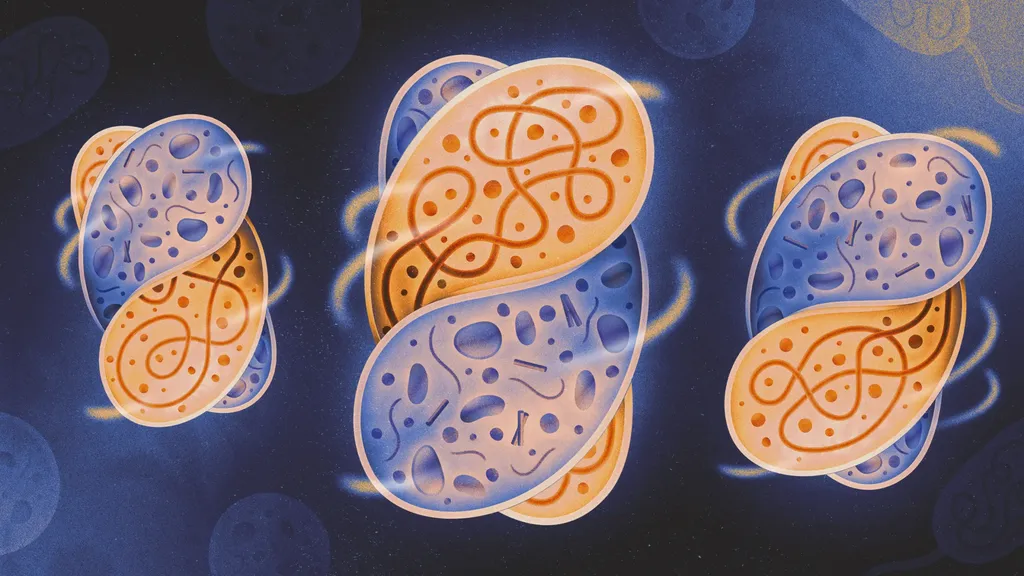In the vast, interconnected web of marine life, diatoms and bacteria engage in a delicate dance of influence and adaptation. A recent study, led by Jiahui Wang from the College of Life Sciences at Qingdao Agricultural University, has shed new light on this intricate relationship, with implications that could resonate through the energy sector. Published in the journal *Applied and Environmental Microbiology* (translated from Chinese as “Applied and Environmental Microbiology”), the research explores how the bacterium Vibrio parahaemolyticus affects the physiology and metabolism of the diatom Thalassiosira weissflogii.
Diatoms, the tiny but mighty primary producers of the marine world, play a pivotal role in global carbon cycling and energy production. Their interactions with bacteria, however, remain a relatively unexplored frontier. Wang’s study sought to change that, investigating the physiological and transcriptional changes in T. weissflogii when grown alone and when co-cultured with V. parahaemolyticus.
The findings were revealing. While the bacterium did not significantly impact the diatom’s growth, it did influence its photosynthetic efficiency and pigment biosynthesis. “This suggests that diatoms might be able to maintain normal growth by upregulating cell cycle-related proteins and utilizing certain bacterial metabolites,” Wang explained.
The study also uncovered disruptions in the balance of carbon and nitrogen metabolism, as well as energy pathways like the tricarboxylic acid cycle and glycolysis. Notably, T. weissflogii responded to V. parahaemolyticus infection by reinforcing its cell wall, increasing chitin biosynthesis, and inhibiting chitinase activity.
These insights could have significant implications for the energy sector, particularly in the realm of biofuels. Diatoms are a promising source of biofuel due to their high lipid content and rapid growth rates. Understanding how bacteria influence diatom physiology could lead to more efficient biofuel production processes.
Moreover, the study’s findings could inform marine aquaculture practices and environmental monitoring efforts. By comprehending the complex interactions between diatoms and bacteria, scientists can better predict and manage the health of marine ecosystems.
Wang’s research is a significant step forward in unraveling the mysteries of algal-bacterial interactions. As she puts it, “Our study reveals that Vibrio can significantly alter diatom photosynthesis efficiency and gene expression patterns, providing new insights into how microbial interactions affect element cycling and primary production in marine ecosystems.”
The study’s comprehensive overview of metabolism variations offers a solid foundation for future research. It paves the way for a deeper understanding of how diatoms adapt to algal-bacterial environments, a knowledge that could shape the future of marine biotechnology and energy production.

